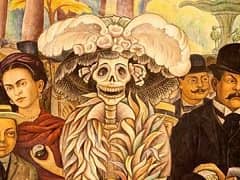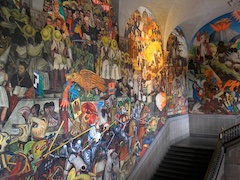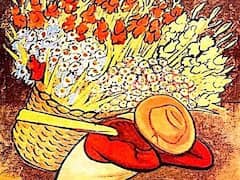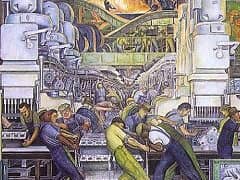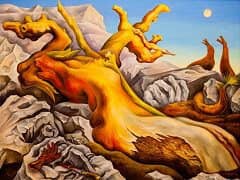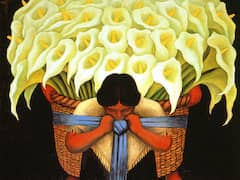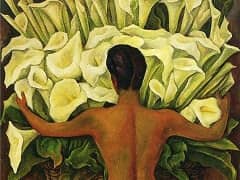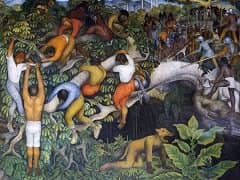Liberation of the Peon, 1923 by Diego Rivera

In Liberation of the Peon, Rivera developed a harrowing narrative of corporal punishment. A laborer, beaten and left to die, is cut down from a post by sympathetic revolutionary soldiers, who tend to his broken body.
In the distance, smoke rises from a hacienda, which stands for a hated system of exploitation that has been consumed by revolutionary fires.
Peonage - a system of indentured servitude established by Spanish colonizers, under which natives were forced to work the land-persisted in Mexico into the 20th century. The mural offers the injustice of earlier social and
economic conditions as a rationale for the Mexican Revolution.
Christian imagery also recurs in this mural, a pictorial allusion to the descent from the cross. This time Rivera employed it to contrast the ideas of tragic freedom and revolutionary freedom. In an unmistakable reference
to a Christian scene of lamentation, Rivera expresses tragic freedom as the moment of death, when the peasant is finally released from his life of drudgery and exploitation.
Before the Mexican Revolution, haciendas - vast agricultural estates owned by wealthy Mexicans or foreigners - dominated the country's social and political landscape. Set ablaze by the rebels in the picture's foreground, this
estate, surrounded by a harsh desert landscape, appears to be located in the northern heartland of Mexico, where the Revolution was launched.

